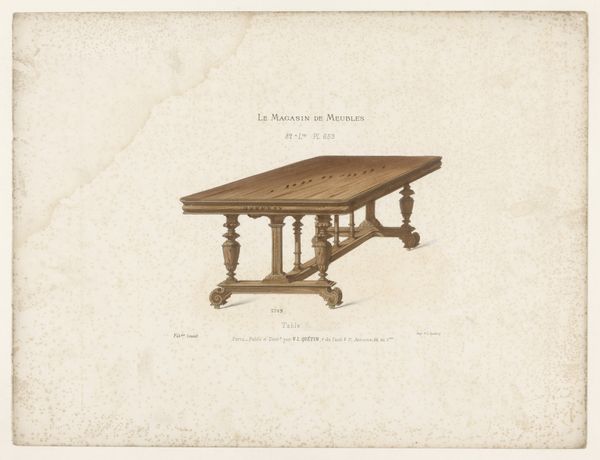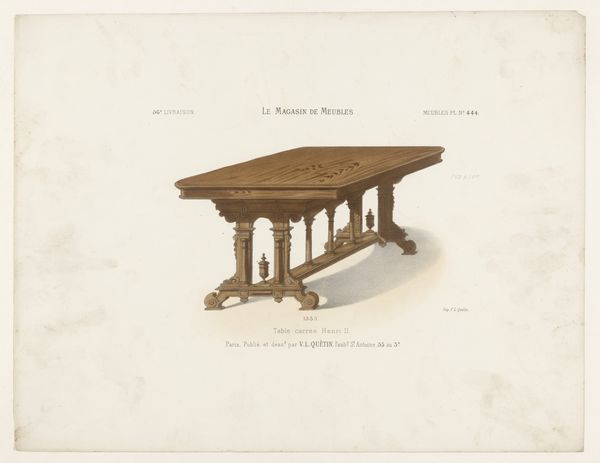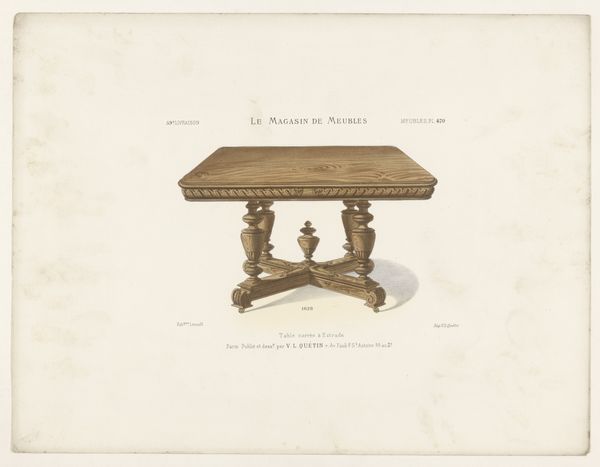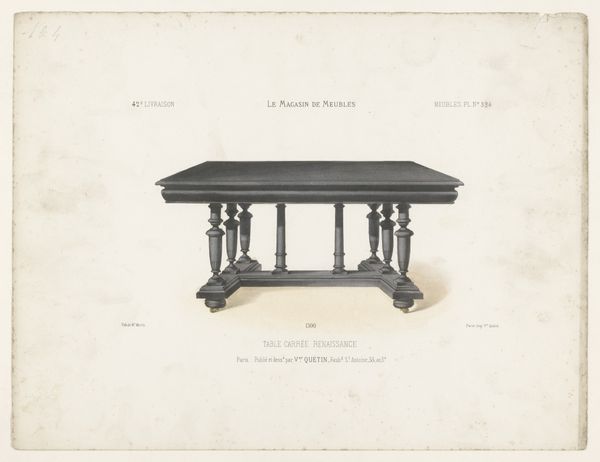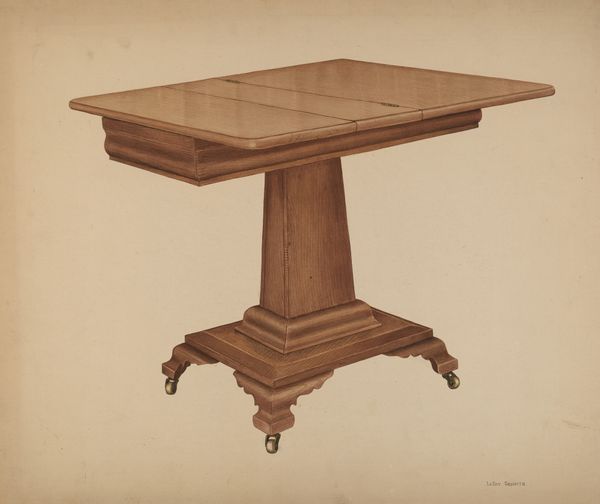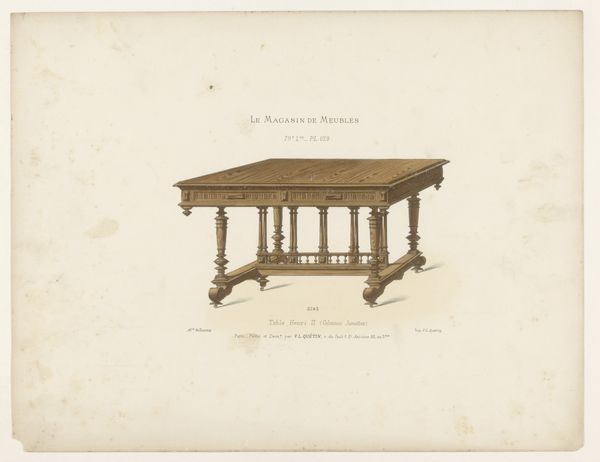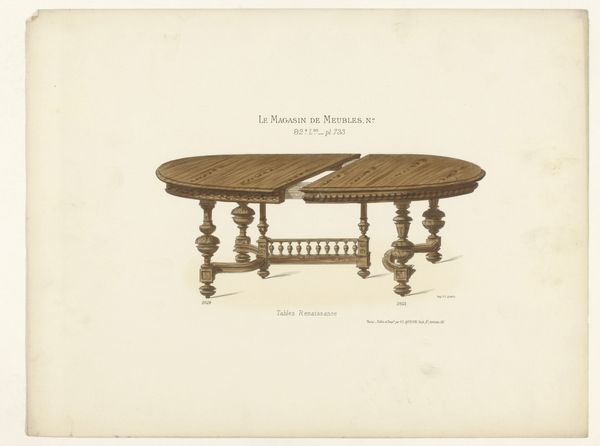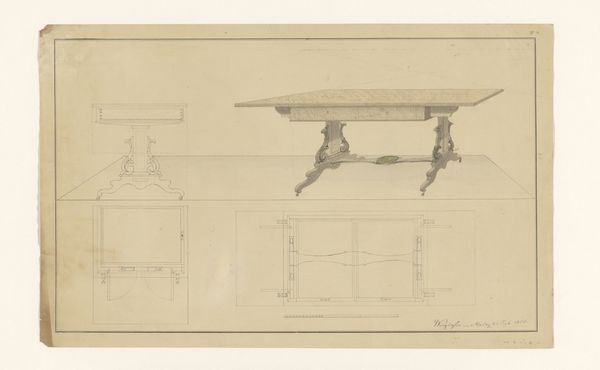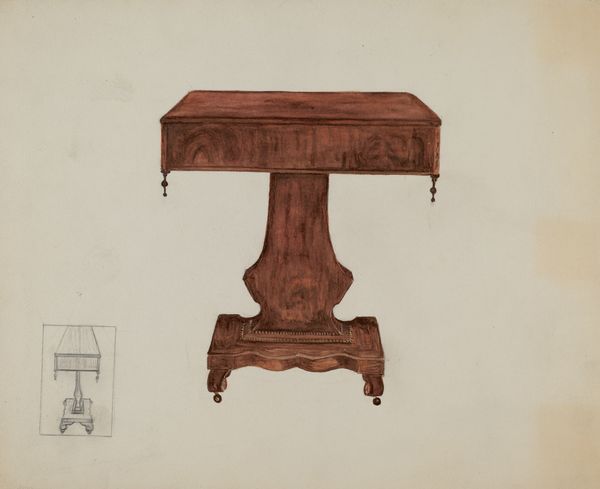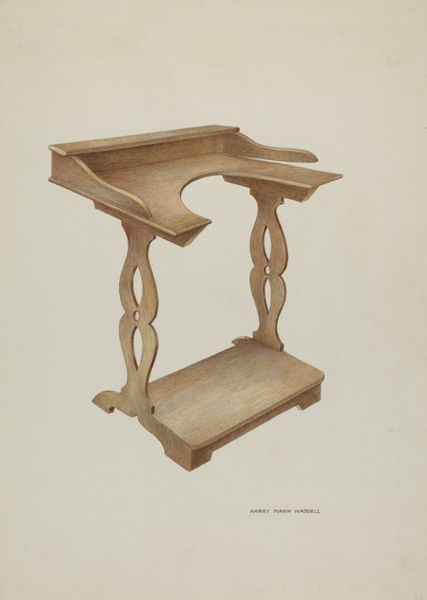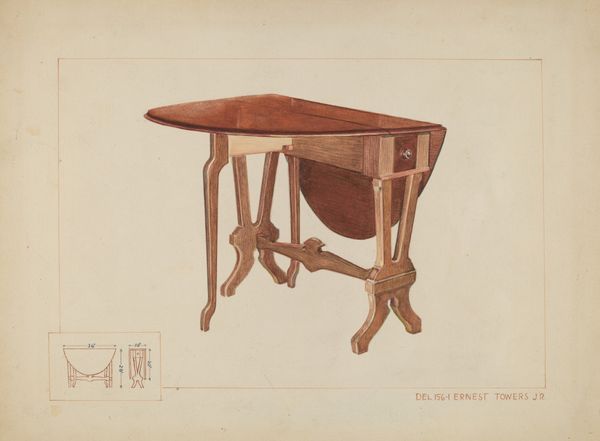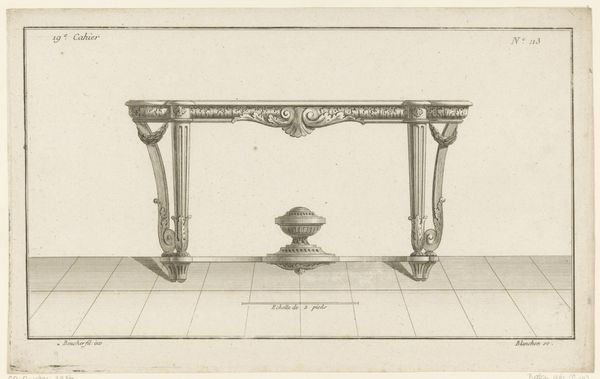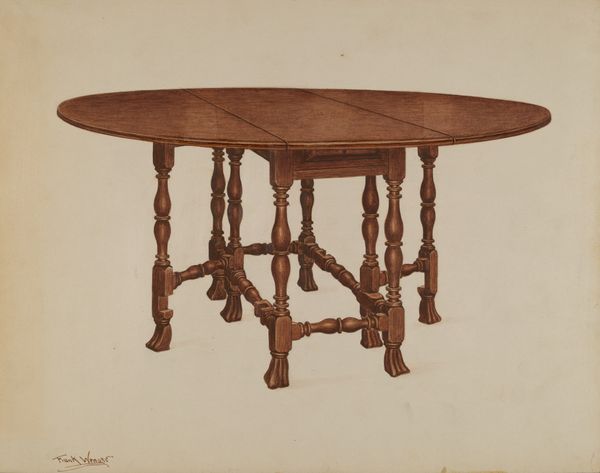
drawing, print, pen, poster
#
drawing
# print
#
pen
#
decorative-art
#
poster
Dimensions: height 256 mm, width 356 mm
Copyright: Rijks Museum: Open Domain
Curator: Here we have “Tafel,” an interesting example of decorative art created after 1878. It’s a drawing, perhaps also a print, executed with pen. Editor: My first thought is about the weight of it. Visually heavy, yes, because of the detailed ornamentation and dark tone, but also conceptually weighty. It feels symbolic of… I don’t know…bourgeois domesticity, maybe? Curator: Indeed. The table as a site for connection, perhaps status… I'm curious about the ornamental details. They are intricate and speak of careful craftsmanship. Do you see anything in the specific motifs used? Anything evocative? Editor: What strikes me more is how these decorative flourishes hide and reinforce the structural logic. The medium itself—pen on paper creating a print—suggests a reproduction, standardization. Curator: Good point. There's an inherent tension, isn't there? On the one hand, there is the impression of unique handiwork, yet this was produced with a printing method. What does that convey about artistic creation during the late 19th century, do you think? Editor: Mass production aiming for luxury, accessible status through carefully crafted image, rather than actual craftsmanship. The wood grain depicted here is clearly idealized! The artist's use of line so neatly contains a sort of social promise. Curator: Promises conveyed through shared cultural visual codes. But the act of consumption also weaves this artwork into social history. Someone chose this image, saw some value in it, kept it for who knows how long. Editor: I suppose the act of creating it, distributing it, acquiring it—all those little gestures create webs of human interaction, labor, aspiration… Even just a seemingly simple furnishing suggests bigger movements of economy and taste. Curator: Exactly, it's all connected, interwoven into a rich symbolic fabric. Food for thought! Editor: Absolutely. It makes you rethink our relationship to even the most ordinary of objects, seeing them as points where material meets meaning.
Comments
No comments
Be the first to comment and join the conversation on the ultimate creative platform.
